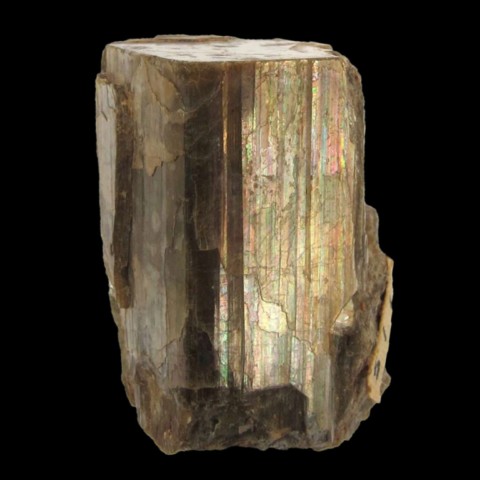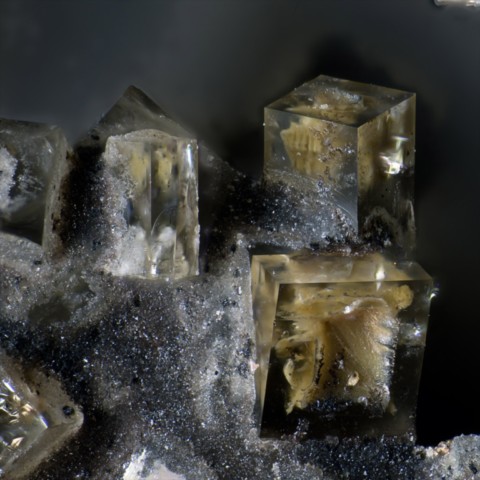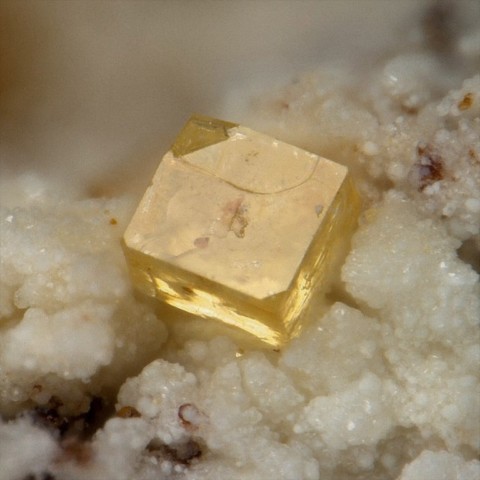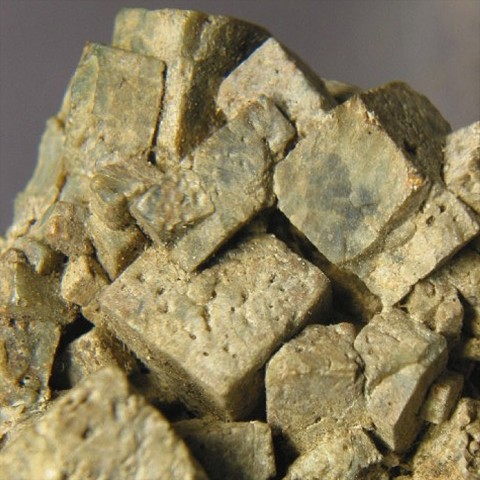GEHLENITE
Class : Silicates
Subclass : Sorosilicates
Crystal system : Tetragonal
Chemistry : Ca2Al(AlSi)O7
Rarity : Quite common
Gehlenite is isomorphic with akermanite, with which it forms a continuous series and whose deposits it often shares. This calcium silicate is a mineral in carbonate rocks found in basic to ultra-basic volcanic rocks, limestones and dolomites transformed by thermal metamorphism, and certain calcic alkaline rocks and certain meteorites. Akermanite and gehlenite also crystallize in abundance in foundry and incinerator furnaces and are therefore essential constituents of metallurgical slag and bottom ash. It was named in honor of the German chemist Adolf Ferdinand Gehlen. Natural gehlenite occurs in short prismatic crystals with the appearance of pseudocubes modified by the octahedron, or in masses ; it is colorless to grayish, grayish green or brownish yellow to brown. Artificial crystals from foundries and incinerators have acicular to bacillary habits, very different from those of natural crystals.
Main photo : 20 cm gehlenite from Vata de Sus, Vata de Jos, Hunedoara County, Romania © Martins da Pedra
Gehlenite in the World
Twinning
No twin known for this mineral species.
Fakes and treatments
No fakes recorded for this mineral species.
Hardness : 5 to 6
Density : Undetermined
Fracture : Undetermined
Streak : White to gray
TP : Translucent to transparent
RI : 1.660 to 1.670
Birefringence : 0.010
Optical character : Uniaxial -
Pleochroism : Low
Fluorescence : None
Solubility : Hydrochloric acid
Magnetism : None
Radioactivity : None





